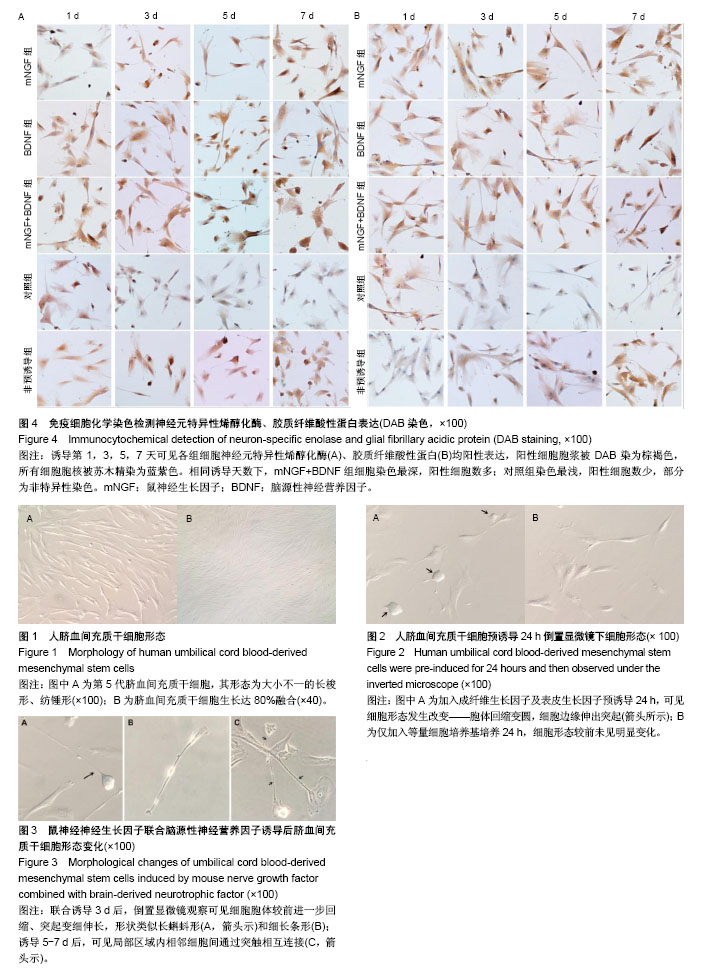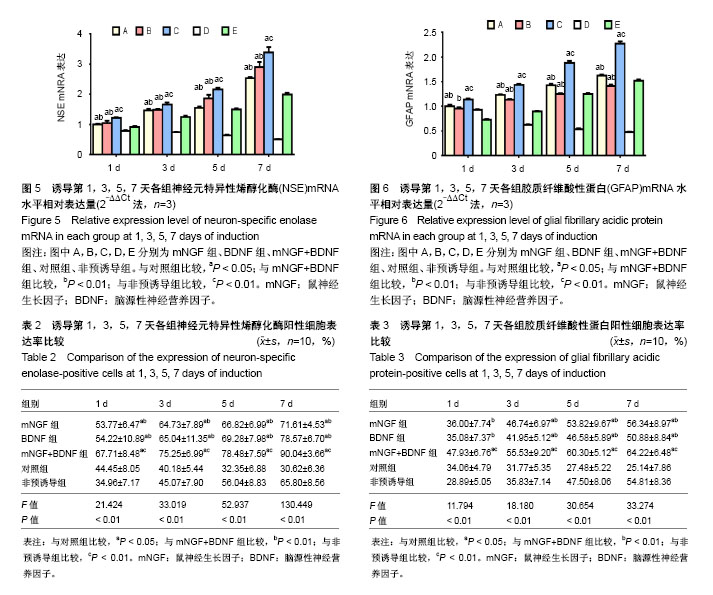| [1] Singh S, Srivastava A, Srivastava P, et al. Advances in Stem Cell Research- A Ray of Hope in Better Diagnosis and Prognosis in Neurodegenerative Diseases. Front Mol Biosci. 2016;3:72.[2] Mine Y, Tatarishvili J, Oki K, et al. Grafted human neural stem cells enhance several steps of endogenous neurogenesis and improve behavioral recovery after middle cerebral artery occlusion in rats. Neurobiol Dis. 2013;52:191-203.[3] 刘俊华,王大斌,顾教伟,等. 神经干细胞移植治疗脑性瘫痪:神经修复的效果和安全性评估[J]. 中国组织工程研究, 2015,19(19):3032-3036.[4] Ager RR, Davis JL, Agazaryan A, et al. Human neural stem cells improve cognition and promote synaptic growth in two complementary transgenic models of Alzheimer's disease and neuronal loss. Hippocampus. 2015;25(7):813-826.[5] Taran R, Mamidi MK, Singh G, et al. In vitro and in vivo neurogenic potential of mesenchymal stem cells isolated from different sources. J Biosci. 2014;39(1):157-169.[6] Lunn JS, Sakowski SA, Feldman EL. Concise review: Stem cell therapies for amyotrophic lateral sclerosis: recent advances and prospects for the future. Stem Cells. 2014;32(5):1099-1109.[7] Zhu Y, Guan YM, Huang HL, et al. Human umbilical cord blood mesenchymal stem cell transplantation suppresses inflammatory responses and neuronal apoptosis during early stage of focal cerebral ischemia in rabbits. Acta Pharmacol Sin. 2014;35(5):585-591.[8] Wang L, Lu M. Regulation and direction of umbilical cord blood mesenchymal stem cells to adopt neuronal fate. Int J Neurosci. 2014;124(3):149-159.[9] Shahbazi A, Safa M, Alikarami F, et al. Rapid Induction of Neural Differentiation in Human Umbilical Cord Matrix Mesenchymal Stem Cells by cAMP-elevating Agents. Int J Mol Cell Med. 2016;5(3): 167-177.[10] Rafieemehr H, Kheirandish M, Soleimani M. Improving the neuronal differentiation efficiency of umbilical cord blood-derived mesenchymal stem cells cultivated under appropriate conditions. Iran J Basic Med Sci. 2015;18(11):1100-1106.[11] Zeng Y, Rong M, Liu Y, et al. Electrophysiological characterisation of human umbilical cord blood-derived mesenchymal stem cells induced by olfactory ensheathing cell-conditioned medium. Neurochem Res. 2013;38(12):2483-2489.[12] Hei WH, Almansoori AA, Sung MA, et al. Adenovirus vector-mediated ex vivo gene transfer of brain-derived neurotrophic factor (BDNF) tohuman umbilical cord blood-derived mesenchymal stem cells (UCB-MSCs) promotescrush-injured rat sciatic nerve regeneration. Neurosci Lett. 2017;643:111-120.[13] Nan C, Guo L, Zhao Z, et al. Tetramethylpyrazine induces differentiation of human umbilical cord-derived mesenchymal stem cells into neuron-like cells in vitro. Int J Oncol. 2016;48(6):2287-2294.[14] 杨自金,郭佳丽,卢思广,等.人脐血间充质干细胞移植联合神经节苷脂注射治疗脑性瘫痪[J]. 中国组织工程研究, 2016, 20(19):2803-2809.[15] Can A, Balci D. Isolation, culture, and characterization of human umbilical cord stroma-derived mesenchymal stem cells. Methods Mol Biol. 2011;698:51-62.[16] Khoo ML, Shen B, Tao H, et al. Long-term serial passage and neuronal differentiation capability of human bone marrow mesenchymal stem cells. Stem Cells Dev. 2008;17(5):883-896.[17] Duan P, Sun S, Li B, et al. miR-29a modulates neuronal differentiation through targeting REST in mesenchymal stem cells. PLoS One. 2014;9(5):e97684.[18] Zhuang H, Zhang R, Zhang S, et al. Altered expression of microRNAs in the neuronal differentiation of human Wharton's Jelly mesenchymal stem cells. Neurosci Lett. 2015;600:69-74.[19] Paczkowska E, ?uczkowska K, Piecyk K, et al. The influence of BDNF on human umbilical cord blood stem/progenitor cells: implications for stem cell-based therapy of neurodegenerative disorders. Acta Neurobiol Exp (Wars). 2015;75(2):172-191.[20] Takemoto T, Ishihara Y, Ishida A, et al. Neuroprotection elicited by nerve growth factor and brain-derived neurotrophic factor released from astrocytes in response to methylmercury. Environ Toxicol Pharmacol. 2015;40(1):199-205.[21] Shi W, Huang CJ, Xu XD, et al. Transplantation of RADA16-BDNF peptide scaffold with human umbilical cord mesenchymal stem cells forced with CXCR4 and activated astrocytes for repair of traumatic brain injury. Acta Biomater. 2016;45:247-261.[22] Ji HY, Kim MS, Lee MY, et al. GABAergic neuronal differentiation induced by brain-derived neurotrophic factor in human mesenchymal stem cells. Animal Cells & Systems. 2014; 18(1):17-24.[23] Zhao J, Cheng YY, Fan W, et al. Botanical drug puerarin coordinates with nerve growth factor in the regulation of neuronal survival and neuritogenesis via activating ERK1/2 and PI3K/Akt signaling pathways in the neurite extension process. CNS Neurosci Ther. 2015;21(1):61-70.[24] 郝冬荣,厉红,庞保东.鼠神经生长因子治疗小儿面神经炎42例[J]. 中国药业,2014, 23(1):82-84.[25] 许马利,王杨. 鼠神经生长因子治疗新生儿缺氧缺血性脑病的Meta分析[J]. 中国临床药理学杂志,2016, 32(7):652-654.[26] 李巧秀,张俊清,翟红印,等. 鼠神经生长因子运动区注射治疗小儿脑瘫疗效观察[J]. 中国妇幼保健,2015, 30(28):4889-4891.[27] Liu YR1, Liu Q. Meta-analysis of mNGF therapy for peripheral nerve injury: a systematic review. Chin J Traumatol. 2012;15(2):86-91.[28] Salehinejad P, Alitheen NB, Ali AM, et al. Neural differentiation of human umbilical cord matrix-derived mesenchymal cells under special culture conditions. Cytotechnology. 2015;67(3):449-460.[29] Huat TJ, Khan AA, Pati S, et al. IGF-1 enhances cell proliferation and survival during early differentiation of mesenchymal stem cells to neural progenitor-like cells. BMC Neurosci. 2014;15:91.[30] Rafieemehr H, Kheirandish M, Soleimani M. A new two-step induction protocol for neural differentiation of human umbilical cord blood-derived mesenchymal stem cells. Iranian Journal of Blood & Cancer. 2015; 7(2):111-116.[31] Sanalkumar R, Vidyanand S, Lalitha Indulekha C, et al. Neuronal vs. glial fate of embryonic stem cell-derived neural progenitors (ES-NPs) is determined by FGF2/EGF during proliferation. J Mol Neurosci. 2010;42(1):17-27.[32] Salehinejad P, Alitheen NB, Ali AM, et al. Neural differentiation of human umbilical cord matrix-derived mesenchymal cells under special culture conditions. Cytotechnology. 2015;67(3):449-460.[33] Lim JY, Park SI, Kim SM, et al. Neural differentiation of brain-derived neurotrophic factor-expressing human umbilical cord blood-derived mesenchymal stem cells in culture via TrkB-mediated ERK and β-catenin phosphorylation and following transplantation into the developing brain. Cell Transplant. 2011;20(11-12):1855-1866.[34] Lim JY, Park SI, Oh JH, et al. Brain-derived neurotrophic factor stimulates the neural differentiation of human umbilical cord blood-derived mesenchymal stem cells and survival of differentiated cells through MAPK/ERK and PI3K/Akt-dependent signaling pathways. J Neurosci Res. 2008;86(10):2168-2178.[35] Santa-Olalla J, Covarrubias L. Basic fibroblast growth factor promotes epidermal growth factor responsiveness and survival of mesencephalic neural precursor cells. J Neurobiol. 1999;40(1):14-27.[36] Sanchez-Ramos J, Song S, Cardozo-Pelaez F, et al. Adult bone marrow stromal cells differentiate into neural cells in vitro. Exp Neurol. 2000;164(2):247-256. |
.jpg)


.jpg)
.jpg)